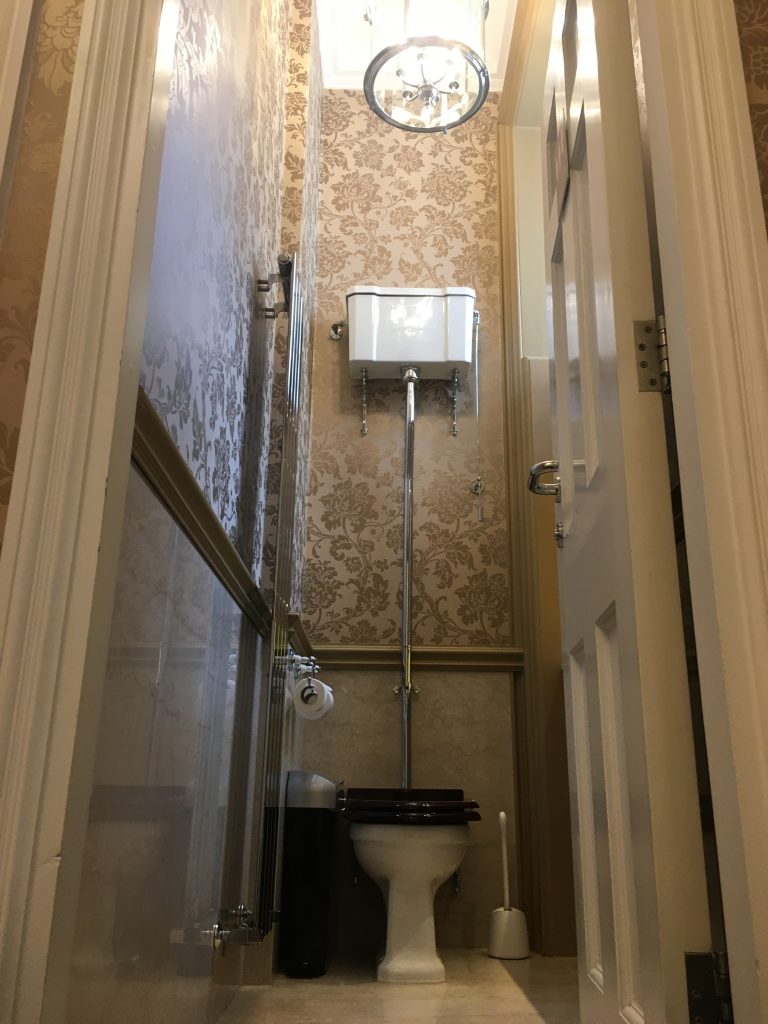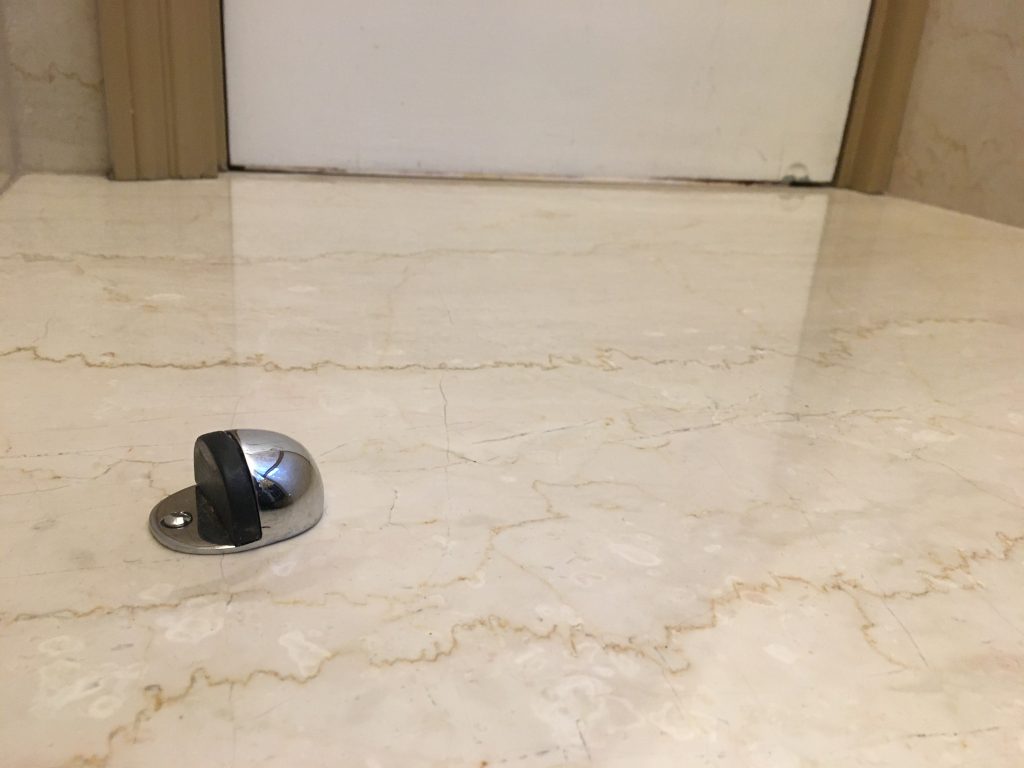Ideas happen in the most unlikely of places
There is this thing called the deliberation-without-attention affect, which can be translated as ‘having an idea on the loo!’
So, today’s hosting loo is in The King’s Fund. A splendid room of class and elegance – with marble floor and walls, lavish wallpaper, bespoke fittings, a chandelier and Classic FM enhancing the ambience for the grateful visitor.
However, today’s visit revealed a shocking situation. The doorstop had come loose and was the wrong way around! 😲
Further inspection shows unmistakable damage to the door. Where there should have just been a rubber marking, where the door opened onto the stopper, there was now paint missing and damage to the woodwork. 😥
This room has been serving staff and visitors for many years, but amidst the business of the day, the relationship between the door stop and the door was under strain.
Pacesetting and affiliative leadership
The damage to the door wasn’t intentional, it just happened whilst people were going about their busy day.
So who hasn’t experienced life in a fast moving organisation where busy days mean everything has to be completed by the ‘close of play’, or preferably yesterday? In many workplaces the current challenges of keeping the show on the road, means that ‘pacesetting‘ is becoming a default leadership style. Keeping everyone on their toes to optimise production. It’s all ‘Go – Go – Go!
According to Daniel Goleman, this style works best when ‘quick results are needed from a highly motivated and competent team’. So if we’ve got a great team everything’s good – and we can carry on ‘go-go-go-ing’…
But if this is the only leadership style , Goleman highlights the ‘overall impact on climate‘ can be negative. Staff can feel stressed, relationships feel transactional and burnout can occur. Staff turnover increases as folks vote with their feet as soon as a more palatable employment opportunity appears, and the transient workforce feel less and less connected with each other.
So maybe we should ditch the pacesetting style altogether?
But we can’t – everything will fall apart if we don’t keep the show on the road. Something else is needed…
Staff need to feel trusted that they can deliver what they are capable of and that a request for support or flexibility, or whatever might help will be received with warmth. They need something that cushions the impact of the constant push of the pace. Something like the rubber part of the door stopper.
The ‘affiliative‘ style has something to offer here. It helps to ‘motivate people during stressful circumstances’, and is all about empathy, building relationships and constructive communication.
We might ask…“Isn’t this all a bit ‘pie-in-the-sky’ and aspirational?…Where do we find time in the day to do all that stuff?” Well, how about during the next Zoom call or Teams meeting. Just spend a few extra minutes warming up to the meeting, have a chat, check in with people on how they are doing. Spend some time ‘being’ with your team. Go to the meeting with the fundamental assumption that your staff will deliver everything they are capable of, and will flag up if they get in a muddle. Enjoy the chatter and lose yourself in the company of those you are with, whoever it may be. Allow some ‘play’ in the conversations. Do everything you can to encourage folks to enjoy their time with you, and each other. Trust that your team want to and can deliver.
This might mean that a meeting might overrun, and allow less time for the ‘do-do-doing’ and the ‘go-go-going’… So what?… You will have a team who are happy to be ‘be-be-being’ and won’t mind when the pace gets pacey. Think about how more productive we tend to be when we’re genuinely absorbed in our communities of work. We might still get a rubber mark from that, but that’s alright. It’s when the paint and woodwork gets damaged – that’s when things start going wrong.




